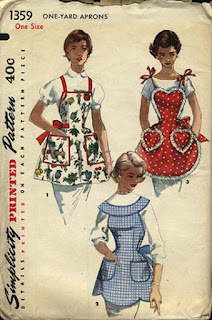At the time, I'd been quilting about four years, and was mostly self-taught. I was transfixed by many of the exhibit quilts. One that I couldn't tear myself away from was the red-and-white one here: http://www.kansasmemory.org/item/224272 .
(Momentary pause while you contemplate it.) The quilt was made in Indiana or Kansas, by Amanda Elizabeth Garman for her daughter Bertha, born in 1878, presumably from a tracing of Bertha's little hand.
On the red-and-white quilt, look how uneven those 'flying geese' triangles are. Check out the upper left corner of the borders, where there's a fragment of a triangle. The improvisational quirkiness brings the quilt its charm and life, though it might peeve today's more traditional quilt judges.
Something else that annoyed 20th century quilters about this quilt is the machine quilting, according to Brackman. The 1878 quilt is machine quilted with straight lines. Some quilters looking at it 100 years later were disappointed that it wasn't hand quilted.
(Ironic or confusing: machine quilting a hand quilt vs. hand quilting a hand quilt?)
To see the white quilting lines, click on the red-and-white quilt image. The lines are on a grid, putting an 8-line intersection at the center of each hand - an emanating asterisk. It's waaaaaaay cool, like a palmistry diagram or Spiderman spraying web in all directions.
The quilt world's disapproving attitude toward machine quilting pre-1990 has completely transformed into an enthusiastic embrace by most. (The turning point, historians say, was Caryl Bryer Fallert's spectacular machine-quilted Corona II: The Solar Eclipse claiming top prize at the American Quilter's Society show in 1989.)
At the time of the Autry show, my mother's birthday was coming up. Amanda's quilt inspired me to make a blue-and-white hand quilt from my 3-year-old son's hand. That's the quilt at the top of this post and below. As the pregnant mother of a toddler, I was way too impatient, busy and tired to do all those hundreds of triangles, so I skipped the sashing, and the upper and lower borders became squares. For more movement, I had the geese on the left border fly north, and on the right, south. The hands are raw edge applique (meaning I cut them out and stuck them on, without turning edges under). I'm pretty sure I used fusible web behind the hands, and stitched a tiny zig-zag to catch the edges. (I wonder if future museums will do exhibits about how quilts changed before and after the advent of fusible web. You think?)
The quilt was machine quilted, with echo quilting around the hands, then spirals in-between. Half spirals are at the edges. Here's a photo that shows the quilting:
It's one of my pet theories that making things wonky is harder than making them precise... unless you're a beginner, which I was. On my quilt, the border spirals are bizarre, many geese points were cut off, and most mysterious of all of all, the top horizontal border is 25 little checks across, while the bottom one is only, uh, 24. How did I do THAT? (Thus the quilt measures 19 1/2" across on bottom, 20" across on top, and 21" high). It took me years to learn how to make borders the same size. (Hint: Measure both borders, cut to the same size, and THEN attach them. The day I read that tip, my world shook.)
The finished quilt hung in my parents' stairwell for 14 years. We hung it low, so the kids could reach it. Thus it has a big smudge where one of my babies tried to fit their hand into the outline, so it needs a good washing.
My baby boy is now in college. When we finally closed down my parents' house last year, I took it off the wall and brought it home with me. It is poignant in so many ways.
The possibilities for hand quilts are infinite. You've probably seen some, and maybe even made one or more. They're particularly popular for children's quilts, because children grow! Here are some interesting hand quilt ideas I found online:
- Hands don't have to march in symmetrical rows. Toss them across the surface helter-skelter. Or set the blocks askew, like this 1980 African American quilt in the collection of the Philadelphia Museum of Art.
- Make them into tree leaves, like here and here.
- Zentangle (advanced doodle) inside a hand, and translate that to freemotion quilting on fabric (Scroll down on this page)
- Set them into intersecting rings, on a satin background, for a wedding chuppah (like quilter Ruth Harris' chuppah on one of my webpages, here. Third photo down.)
- Add names, on or below the hands. You embroider them, for an old-timey look.
PS I shared this on Nina-Marie Sayre's Off-the-Wall Fridays, with lots of wonderful art quilts: http://ninamariesayre.blogspot.com/















































